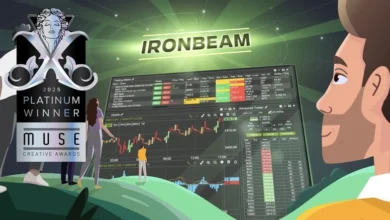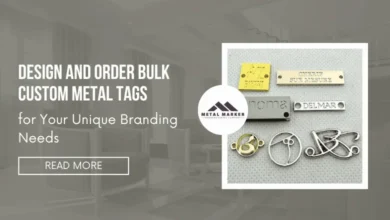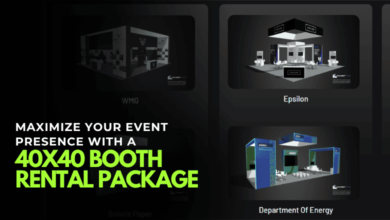
Fundraising can be a fun and rewarding experience, especially when it involves tasty products like cookie dough and candy bars. Whether you’re raising funds for a school, sports team, charity, or a community event, offering these beloved treats can help generate excitement and support for your cause. However, successfully promoting a cookie dough or candy bar fundraiser requires more than just offering great products; it involves strategic marketing, engaging your community, and making it easy for people to participate.
1. Leverage Social Media Platforms
Social media is one of the most powerful tools for promoting any fundraiser, especially food-related ones like cookie dough fundraisers. Platforms such as Facebook, Instagram, Twitter, and TikTok allow you to reach a broad audience with minimal cost.
Key Considerations:
-
Visual Appeal: Both cookie dough and candy bars have strong visual appeal. Post high-quality photos of your products, or create short, fun videos showing people enjoying the treats.
-
Hashtags: To increase visibility, use relevant hashtags such as #CookieDoughFundraiser or #CandyBarFundraiser. Encourage supporters to use these hashtags when they share posts.
-
Engagement: Host giveaways or contests where participants can win free products by tagging friends or sharing posts, which not only engages your audience but also expands your reach.
Trade-Offs:
While social media is an effective tool, managing multiple platforms and creating consistent content can be time-consuming. Additionally, not everyone in your target audience may be active on social media, so it’s important to combine online strategies with offline promotions.
2. Email Campaigns and Newsletters
Email marketing is a tried-and-true method for promoting fundraisers. It’s a great way to reach supporters directly in their inboxes, where they can learn about your products at their convenience.
Key Considerations:
-
Personalization: Craft personalized emails for different segments of your audience. For instance, parents may be interested in the school fundraiser, while sports teams might be looking for candy bars to fund their season.
-
Clear CTAs: Your email should include a clear call to action (CTA) that directs readers to a website or ordering page.
Trade-Offs:
While email campaigns can be very effective, they often require a list of supporters who have opted in to receive communications. Building that list can take time, and there’s always a risk of your emails getting lost in spam folders.
3. Host Pop-Up Events or Booths
Hosting in-person events such as pop-up booths or stalls at local community centers, school events, or festivals can be a great way to generate interest in your products.
Key Considerations:
-
Location: Choose a location that draws your target audience, such as a busy shopping center or a local fair.
-
Engagement: Set up samples of your cookie dough or candy bars so potential customers can taste before buying.
Trade-Offs:
While pop-up events can generate instant interest, they often require significant planning and can be labor-intensive. Additionally, you may need to acquire permits or permissions to set up at specific locations.
4. Create an Engaging Fundraising Website
A dedicated website or landing page can be a hub for your fundraiser. Here, supporters can learn about the cause, place orders, and easily share information with others.
Key Considerations:
-
User-Friendly Design: Ensure the website is easy to navigate and mobile-friendly, as many people will visit it from their phones.
-
Order Tracking: Integrate a system that allows customers to track their orders and see their impact.
Trade-Offs:
Creating a professional, functional website can be costly or time-consuming if you don’t have the resources in-house. Additionally, you may need ongoing maintenance to ensure everything runs smoothly.
5. Partner with Local Businesses
Building alliances with local businesses is a win-win strategy. In exchange for visibility, these businesses can help promote your products to customers.
Key Considerations:
-
Mutual Benefit: Offer to promote the business through your fundraising materials in exchange for them promoting your fundraiser in-store or on their social media.
-
Cross-Promotions: Use their location or customer base to set up a booth or display, making it easier for people to learn about and participate in your fundraiser.
Trade-Offs:
Not all businesses may be open to partnerships, especially if they’re already supporting other causes. To maximize impact, it’s also important to ensure that the business’s customer base aligns with your target audience.
6. Utilize Fundraising Platforms
Online fundraising platforms such as GoFundMe, Kickstarter, or specialized fundraising sites for schools and organizations can simplify promoting and tracking donations for your fundraiser.
Key Considerations:
-
Ease of Use: These platforms typically offer templates, built-in donation tracking, and social sharing features.
-
Promotions: Many platforms allow you to offer incentives for donations, such as discounts or special treats for higher-level contributions.
Trade-Offs:
While these platforms offer convenience, they often charge service fees, which may detract from the funds you raise. Additionally, there may be restrictions on how you can structure your fundraiser.
7. Offer Bulk Ordering Options
Encouraging people to buy in bulk can increase your sales, especially for fundraisers involving items like cookie dough and candy bars, which are perfect for parties, events, and gifts.
Key Considerations:
-
Discounts: Offer discounts for bulk purchases or bundle deals, such as “Buy 3, Get 1 Free.”
-
Customization: Customers should be able to customize their orders, such as selecting specific flavors of cookie dough or candy bars.
Trade-Offs:
Offering bulk discounts can reduce your per-item profit margin. Additionally, you’ll need to ensure that you can handle the increased demand for large orders and manage inventory accordingly.
8. Use Influencer Marketing
Influencer marketing can be highly effective for spreading the word about your fundraiser. You can collaborate with local or micro-influencers who can promote your fundraiser to their followers.
Key Considerations:
-
Targeted Influencers: Choose influencers whose audience aligns with your target market. For example, a local mom blogger may be great for promoting a school fundraiser.
-
Content Creation: Influencers can create content that showcases your products, such as unboxing videos, taste tests, or even live events.
Trade-Offs:
Influencer marketing can be costly, especially if you partner with larger influencers. Additionally, there’s no guarantee that their followers will convert into buyers, making it a gamble.
9. Engage in Local Media Outreach
Reaching out to local media outlets, including newspapers, radio stations, and television channels, can help raise awareness about your fundraiser.
Key Considerations:
-
Press Release: Send a well-crafted press release that highlights the unique aspects of your fundraiser, such as the cause, the products, and any special events.
-
Interviews: Offer to do interviews or live segments on local TV or radio shows to promote your fundraiser.
Trade-Offs:
Local media outlets may not always be willing to cover your fundraiser, and pitching your story to the press can take time. Additionally, coverage is not guaranteed.
10. Offer Incentives for Participation
Providing incentives can boost the participation and enthusiasm of your supporters. Offer rewards, such as prizes or recognition, for those who participate in your cookie dough or candy bar.
Key Considerations:
-
Tiered Rewards: Create tiered incentives where the more someone purchases or donates, the better the reward they receive.
-
Recognition: Publicly acknowledge top fundraisers in newsletters, on social media, or at the event itself.
Trade-Offs:
While incentives can encourage participation, they can also reduce profits if not structured carefully. Make sure the cost of the incentives doesn’t outweigh the funds raised.
Wrapping Up
Promoting a fundraiser requires a mix of strategies that engage your audience, build excitement, and make it easy for people to participate. From leveraging social media to partnering with local businesses, each creative idea outlined above uniquely boosts your fundraising efforts.
Ultimately, the best approach will depend on your specific goals, resources, and audience. Whether you focus on online promotions, in-person events, or influencer collaborations, understanding the trade-offs involved in each strategy will help you make informed decisions that maximize the success of your fundraiser.
By balancing these strategies and considering your target audience’s needs, you can create a successful campaign that brings in funds and community support.






